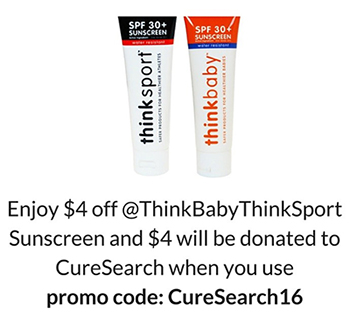You’ve heard it many times before – your skin is your largest organ. You should protect it fiercely, especially when it comes to sun exposure.
Skin cancer is the most prevalent form of cancer. It is also the most preventable. Did you know that having more than five sunburns or one blistering burn before turning 16 doubles the risk of developing skin cancer?
 Here are some tips reduce your risk:
Here are some tips reduce your risk:
- Wear sunscreen.
An SPF of 15 of more reduces the risk of developing melanoma by 50% and squamous cell carcinoma by 40%. Also, when looking at your bottle, make sure you are not slathering on expired lotion, or one with harmful ingredients. To stay protected throughout the day, reapply every two hours, or after swimming or sweating. We recommend ThinkBaby/ThinkSport – a top-rated sun protection free of harmful chemicals and falls into the category of highest water resistance. - Avoid peak times.
The sun is strongest between 10 am and 4 pm. - Wear protective clothing.
Dark colors block more UV rays, but even just the small act of wearing a hat, shirt, long shorts and sunglasses go a long way. - Seek Shade.
Trees and umbrellas help to shelter your skin from harmful rays.
Of course, reducing your risk is an important first step, but take the time to know your skin. Early detection and regular doctor visits are imperative to your health and can save your life.
Here are the warning signs of melanoma:
- A for asymmetry: The two halves of the mole do not match.
- B for border irregularity: The borders of the mole are fuzzy and irregular rather than sharp.
- C is for color variegation: In addition to brown or black, other colors are present.
- D is for diameter: The size of the mole is bigger than the size of the eraser on your pencil (0.6 cm or about 1/4 of an inch).
- E is for evolving: The mole has changed in size, shape or color.
IMPORTANT: This list is not a substitute for regular visits to your doctor for skin screenings.
Want more stories like this?
Get emails that matter, when it matters.
